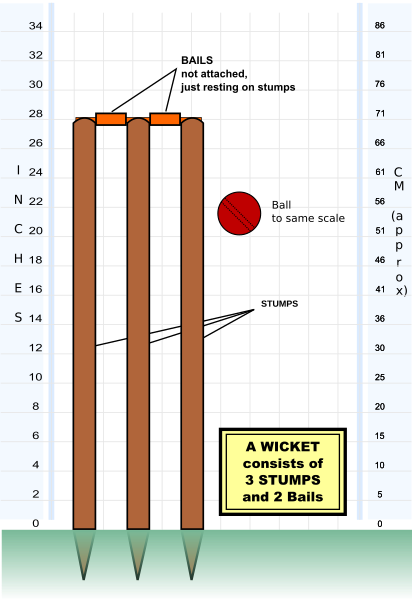
Australia v. South Africa Test Match on 26 December 2013.
The sport of Cricket is, to the average American, a complete and utter mystery. Monty Python has pretty accurately encapsulated the American view of the sport:
In reality, Cricket is not that difficult to understand, and is an exciting cousin of our own sport of Baseball.
Like Baseball, the goal of Cricket is for the batting team to score runs, with a fielding/bowling [pitching] team attempting to prevent such scores. Each team gets an opportunity to bat and score points in each innings. Unlike Baseball, the number of innings depends on the particular adaptation of Cricket (some have two innings, while others only 1). There are 11 players on each team.

The typical Cricket pitch -- the part of the field where all of the bowling [pitching] and batting take place.
Unique is Cricket's arrangement where there are two batters on the field at once, though only one is actually receiving bowls [pitches] at a time. The batter has two goals: to defend the "wicket" located behind him from being hit by a pitch, and to hit the ball so as to facilitate runs.
If a batter in Cricket hits the ball out of the playing field [a home run] that is worth 6 runs; if it lands in play and then exits the playing field [a ground rule double in Baseball] that is worth 4 runs; if he hits it in play, he only gets as many runs as he is able to switch places with the other batter in the field. They switch places for one run per switch.

The Wicket -- a target of bowlers [pitchers] and object of defense for batters.
A batter is out, most commonly, when the ball he has hit is caught [like Baseball], if the bowler hits the wicket behind him that he is defending, or if, while trying to switch places with the other batter on his team, the fielding team "tags" his wicket. It is also possible for him to be out if he blocks the wicket with his leg or body, denying the bowler a clear attempt at hitting the wicket.
This video gives a good summary of some of these rules, and how you can be out:
The bowler [pitcher in American parlance] is allowed six pitches per "overs." If his pitch is too high or wide, the batting team is automatically awarded a run for a "wide ball" or "no ball," and this does not count against the total of bowls in the over. If it is in the "strike zone," shall we say, it counts, and the bowler gets six such pitches. If they result in a run, and the batter switches place with his teammate also on the field -- so be it -- the bowler continues to pitch in the same direction and at whomever is there. Likewise if a batter is out -- then the bowler "pitches" to his replacement. After six fair pitches, the bowler has completed an "over," the action changes direction, and another bowler takes his place. It is not legal for a bowler to bowl two overs in a row.
In some versions of Cricket, an innings is only over after 10 of the 11 members of the team is out, regardless of the number of overs (in test matches, for instance). In other games, there is a limited number of overs per innings -- One Day International (ODI) matches, for instance, allow for 50 overs per innings. In this case, the innings is over after 50 overs, or 10 outs -- whichever comes first. Each team gets one innings at bat!
This video gives a grand overview of the game:
Live well!
No comments:
Post a Comment